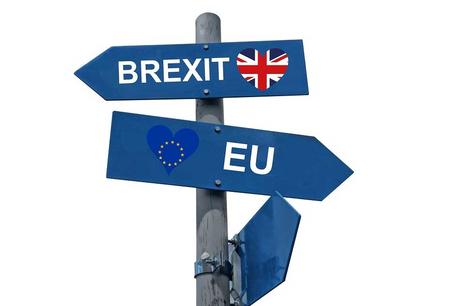In 2017, e-commerce sales in the European Union (EU) increased to hit €602 billion, which is a double-digit increase, but VAT fraud still costs members states of the EU as much as €50 billion annually.
The reason? The EU has standard VAT rules, they may be applied differently in different countries – and e-commerce across borders just complicates matters since it requires online sellers to register for VAT in every EU member state where they sell their goods.
It is why the European Council adopted new rules that make it easier for online sellers to comply with VAT obligations. The regulations will start coming into play starting 2019. Until then, here are a few things that e-commerce businesses should know for now:
– VAT obligations of non-EU sellers
– VAT obligations of EU sellers
– Consequences of non-compliance
1. What’s VAT
Value Added Tax (VAT), unlike sales tax, is collected by all the sellers of services and goods at every stage of the supply chain. It means that manufacturers, suppliers, retailers, distributors, and end consumers all pay VAT on purchases. In comparison, sales tax in the United States is imposed on the final consumer only.
2. European VAT Rules
When selling as a European business to EU consumers:
Online sellers based in the EU and selling goods online to consumers in Europe have to consider the distance selling rules. Distance sales refers to goods dispatched to private consumers in a different EU member state with the supplier being responsible for delivery.
The rules apply even if you fall into the categories below:
– You aren’t VAT registered
– You are a sole trader
– You sell exclusively via a marketplace
The rules are important with regards to VAT in the EU and can catch out numerous online traders in Europe. However, sellers can use them to their advantage and expand throughout the EU while keeping the cost of compliance low if properly used.
Distance selling rules allow you to sell cross-border to customers in the EU until the thresholds that have been set are met. You will apply the VAT rate of the outbound country on your sales before the thresholds are met.
Once you have exceeded the threshold for the buyer’s country, you will have to switch to that country’s domestic tax rate and make sure that you are VAT registered in that member state.
For instance, while the UK’s distance selling limit is £70,000, it is £100,000 in Germany. It means that if you are VAT registered in the UK and start distance selling to Germany, you will still be required to apply for and file VAT refunds in the United Kingdom until you reach £100,000 in annual sales.
Once you have hit the threshold, you will be required to file your VAT returns in Germany. The moment you are VAT registered in a different country, make sure that you only charge VAT in one country, which means that once you surpass the threshold you will be charging VAT in the buyer’s country.
If you hold stock outside the EU or drop-ship products from outside the EU, the responsibility for duties and taxes will depend on the importer of record. If the importer of record is the customer, he/she is liable for VAT and import duties when the products are imported.
One option to avoid this would be to register for VAT in the first port of entry into Europe. In such a situation, you can reclaim your import VAT on the VAT return. All the sales to the customers in the country where you are registered have to include the local VAT rate.
If you use fulfillment centers for storing goods in an EU member state, you create a supply of goods that’s taxable and will have to be VAT registered at once. The key thing to note here is that after you are VAT registered in one EU member state, the distance selling rules will start applying to you.
3. Additional Declarations You Should Know About
Just to add to the complexities of VAT in the EU, every member state has its own reporting threshold referred to as Intrastat declarations. They are mandatory statistical returns that helps tax authorities monitor the movement of goods in the EU.
EC Sales Lists (ESLs) are more commonly reported by e-commerce sellers. They are used for documenting intra-community B2B sales along with the movement of stock between EU countries for easier management of the movement of the taxable supply of goods. They are filed alongside the VAT return in the outbound country.
Prior to shipping products to the EU, you will require an EORI (European Operator Identifier) Number. It is linked to your VAT number and helps customs official in Europe to easier identify your shipments and issue documents that helps you reclaim import VAT paid at customs.
The EORI and VAT numbers are equally important when you make a shipment to Europe, so make sure that the shipping provider includes both numbers in the bill of lading.
4. What Should You Consider When You Expand Internationally?
If you are a small or medium business, you could be thinking about expanding to other markets in Europe to grow the business. Here are a few things to consider:
You should think about using a third party or fulfillment center to fulfill your shipping needs since exporting may require some expertise and good strategic planning.
Amazon may provide direct access in its pan-European program, but you must first be VAT registered in 7 countries straight away.
Try finding a marketplace that’s best suited to your business.
You should also enlist the services of a professional translation service.
Getting industry experts to help not only ensures that you are compliant but that each penny is used properly. Consider using an international consultancy that can help to ease the pain of growing anywhere in the world.
It will help free you up to grow the e-commerce business positively without the bureaucratic processes of local government bogging you down.
5. Do You Plan to Sell Digital Services Cross-Border in the EU?
You still have to consider VAT even if you plan to sell digital services cross-border. It is where the VAT Mini-One-Stop-Shop (VAT MOSS) plays a critical role.
The rules that the EU commission will come into force on January 1st 2021 and will simplify VAT for the supply of electronic services along with broadcasting and telecoms services. It is set to lower costs for businesses by as much as 95 percent.
The first phase of those new rules will be a threshold for application of the current MOSS system. The MOSS system used for VAT payment and reporting will then be extended to all types of goods and services 2 years later. If you are dealing with the UK, then you should keep abreast with all of the latest Brexit news around VAT.

6. What Will Happen If You Fail to Comply?
The EU has recently started to crack down on e-commerce marketplaces and sellers such as eBay and Amazon for tax fraud, so ignoring VAT when you sell internationally may have serious consequences for your business.

It can not only cause a lot of stress, but the entire business could be under threat in case you don’t comply. You may become liable to some if not all of the following as a result:
– Investigation by the authority
– Seller account being shut down on marketplaces
– Years of backdated payments

